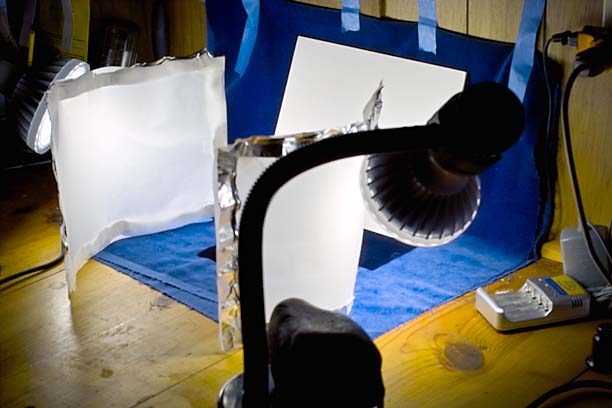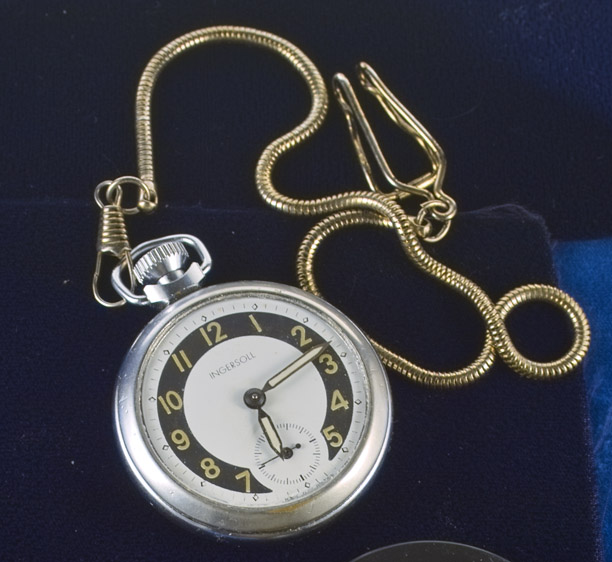Results 21 to 40 of 57
Thread: Black Objects
-
25th November 2014, 05:35 PM #21

- Join Date
- Apr 2011
- Location
- Western MA, USA
- Posts
- 453
- Real Name
- Tom
Re: Black Objects
-
25th November 2014, 05:56 PM #22
-
25th November 2014, 06:28 PM #23

- Join Date
- Feb 2012
- Location
- Texas
- Posts
- 6,956
- Real Name
- Ted
Re: Black Objects
IMHO, diffused lighting is essential for reducing that effect. In my camera shots posted earlier I was using two LED lamps about 2ft from the subject each side and two separate sheets of thick tracing paper about 8" from the subject. About 6" behind the subject there was a Kodak white card acting as a diffusing reflector of sorts; if instead there was black velvet behind and under the subject, that might work for you - although the velvet that I use does give specular reflections under direct flash (no surprise there).
-
25th November 2014, 06:47 PM #24
-
25th November 2014, 07:22 PM #25
-
25th November 2014, 07:27 PM #26
Re: Black Objects
Ted,
Right now I only have the R1C1 wireless flash system, it comes with a diffuser panel and closeup positioning adapters. This system is designed for macro work and I've been thinking about ordering a new flash system or adding additional SBR200 speedlights to the two I currently have.
http://www.nikonusa.com/en/Nikon-Pro...ht-System.html
-
25th November 2014, 11:39 PM #27
-
25th November 2014, 11:47 PM #28
Re: Black Objects
Boab,
I stand corrected, especially that Kiev model.
-
26th November 2014, 08:42 AM #29
-
26th November 2014, 10:01 AM #30
-
26th November 2014, 10:13 AM #31
-
26th November 2014, 02:41 PM #32

- Join Date
- Feb 2012
- Location
- Texas
- Posts
- 6,956
- Real Name
- Ted
Re: Black Objects
Aha . . . small light sources giving specular reflected highlights unless used for true macro work, I suspect. Also, if the diffuser panel fits close to the flash units, i.e. on-camera, there will uneven lighting even though diffused.
On the other hand, here's one of my layouts, this one for a pocket watch . .

Here's the result:

Not the finest of shots but it was unprocessed for a post about diffusion. The dark background for the watch is Navy Blue (almost black) velvet cloth. Observe the trusty Kodak white card at the back of the layout, serving as a diffuse reflector.
but it was unprocessed for a post about diffusion. The dark background for the watch is Navy Blue (almost black) velvet cloth. Observe the trusty Kodak white card at the back of the layout, serving as a diffuse reflector.
By having the lamps separate from the diffuser panels and the panels separate from the subject, the diffusion effect can be controlled by relative positioning, i.e.
Lamp far and panel made curved and close to subject: maximum flatness of lighting.
Panel made flatter and moved closer to the lamp: lighting tends toward more uneven with a brighter center.
Lamps are big PAR38 size, LED, 60 degree floods, 1100 lumens, 3500K (no blue cast). I keep a small LED flashlight (torch) handy, to add a bit of sparkle if necessary.Last edited by xpatUSA; 26th November 2014 at 03:37 PM. Reason: edited positioning descriptions
-
26th November 2014, 04:31 PM #33
Re: Black Objects
Ted,
I've tried a similar setup using the light tent and the R1C1 speedlights and never felt the intensity of the flash was strong enough to penetrate the side panels of the light tent. I would eventually place the speedlights inside the tent and sometimes bounce the light off the inside of the tent or the top. Thanks for the visual.
-
26th November 2014, 05:06 PM #34

- Join Date
- Feb 2012
- Location
- Texas
- Posts
- 6,956
- Real Name
- Ted
Re: Black Objects
I understand and would feel the same, probably. Using flash for table-top work does bring it's own problems and I almost never do it. A big problem for me is having to control the exposure with aperture which, in turn, affects the DOF. On the other hand, with continuous lighting of any kind, you can fix the aperture to that needed for DOF and set the shutter time for the desired exposure (still talking table-top work). I use manual settings for everything in this kind of work, for what that's worth.
One thing I haven't tried yet is using my two clunky old Sigma EF-500 GD flash units, (in manual of course ), in place of the LEDs and triggering them wirelessly from my Sigma camera (with no flash on the cam). Their beam spread angle is variable, so the diffusers could be illuminated without spraying light all over the place, and selecting an even narrower angle would be equivalent to moving the diffusers closer to the lamps. They are nominal 50m Guide No. and have a reasonable punch . .
), in place of the LEDs and triggering them wirelessly from my Sigma camera (with no flash on the cam). Their beam spread angle is variable, so the diffusers could be illuminated without spraying light all over the place, and selecting an even narrower angle would be equivalent to moving the diffusers closer to the lamps. They are nominal 50m Guide No. and have a reasonable punch . .
Last edited by xpatUSA; 26th November 2014 at 05:20 PM.
-
26th November 2014, 05:25 PM #35
Re: Black Objects
I think you have several problems - very roughly done

Posting ProPhoto? Pass on what that might do.
The 1st thing I did was convert to jpg sRGB and restore the image entirely as far as it will go so that the camera could be seen clearly. Levels with a lot of gamma adjustment to the left and a 50% soft light layer to get some contrast back.
The white background makes life difficult so I selected and darkened it roughly as far as it would go. A background that is black or dark all over should help with that.
Then used a straight line curve dragging the black end to cause the blacks to fade into the image.
Then a none linear gradient across the image. Dark far left to brighten slightly around the knob on right and then darkening to the edge.
The rest of the background doesn't help. What I feel you need to do is use cloth etc so it's all the same and then light from the right hand end of the camera with some fill in to remove the shadow from the lens but that probably wont be apparent after adjustment.
Dragging the curve like this will increase the contrast through out clipping blacks but a bit of top S could be applied to damp down the brighter bits if needed. When this sort of thing is attempted I feel it's best to go for a decent image and maybe light to help the final effect. Then adjust.
John
-Last edited by ajohnw; 26th November 2014 at 05:30 PM.
-
26th November 2014, 06:21 PM #36
-
26th November 2014, 06:22 PM #37
-
27th November 2014, 06:27 AM #38

- Join Date
- Apr 2012
- Location
- Dunedin New Zealand
- Posts
- 2,697
- Real Name
- J stands for John
Re: Black Objects
I see the option with reflective subjects, or part of subjects, is to either watch for the family of angles as in the mentioned book or else cover all the angles with a light tent ... with the refinement of not using a light tent but making one and having areas of black to create darkness to show the shape of the object. The Book ....Full of good stuff I'm sure but the delivery is tedious. Mine sits half read beside me as I type this

-
27th November 2014, 08:08 AM #39
-
27th November 2014, 09:11 AM #40

 Helpful Posts:
Helpful Posts: 


 Reply With Quote
Reply With Quote













